50mm Lens Comparison – Radioactivity
Instead of adding even more words/bulk to my article about radioactive lenses, I would like to present my collection of radioactive lenses and the measurements thereof in a separate post.
If you’re interested in finding out more about radioactivity, how and why it found its way into photography equipment and some thoughts on the reason for the often found color cast in radioactive lenses, you should read my other article about radioactive lenses.
If you wondered, the pictures in the first part of this article were taken with my Fuji X100s at iso 3200 and f/4 or f/2.8. The basement isn’t very well lit, I suppose.
How did I measure the radioactivity?
I used the Geiger Counter from our physics department at school and held it at a certain distance of the glass elements to measure the activity.
The distance is important because the particles you want to detect (in this case beta- and alpha-particles) are emitted in a near-sphere-like manner and therefore you will detect more particles the closer you get to the source. Also, because of the limited range of alpha-particles you can expect an additional decrease of activity at a large distance.
For instance, I could not measure any hightened activity at a distance of 50 cm.
For instance, I could not measure any hightened activity at a distance of 50 cm.
The first thing you always need to do is measure the background level of radioactivity. Being in switzerland and given that I was in the basement of a rather old building, the background measured in at 50 cpm. That’s because of the radioactive element radon, a gas which is a product of the chain of decay from uranium embedded in the granite. Radon often accumulates in the basement of old houses and is, in switzerland, the second highest cause for lung cancer.
This image shows my setup for the first set of measurements which I took at a distance of 10cm (about 4″) from the lens surface.
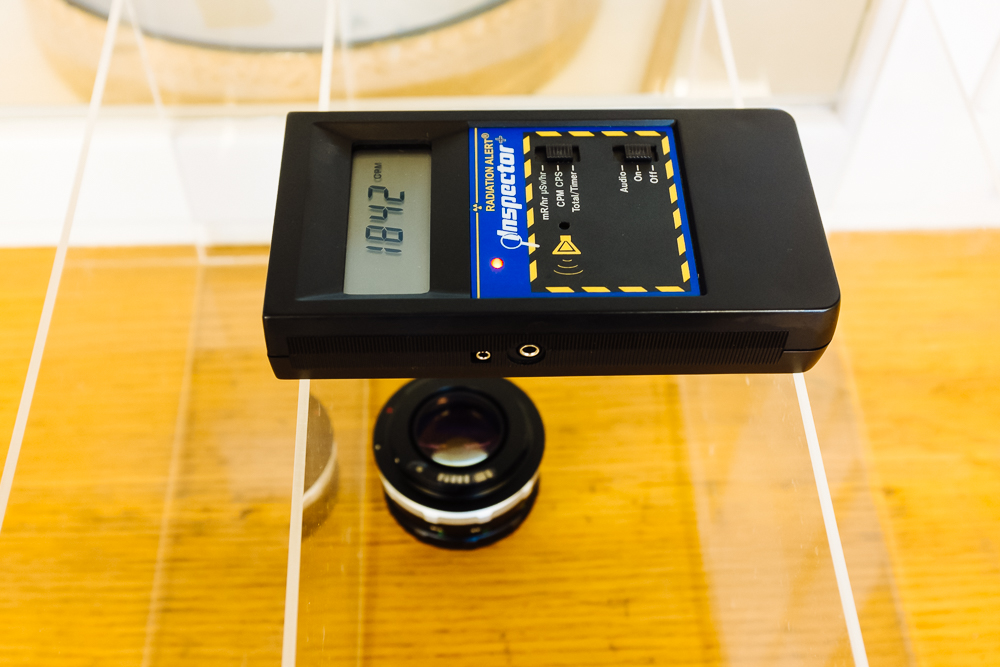 The following picture shows my setup for the second set of measurements which I took at a distance of 3cm.
The following picture shows my setup for the second set of measurements which I took at a distance of 3cm.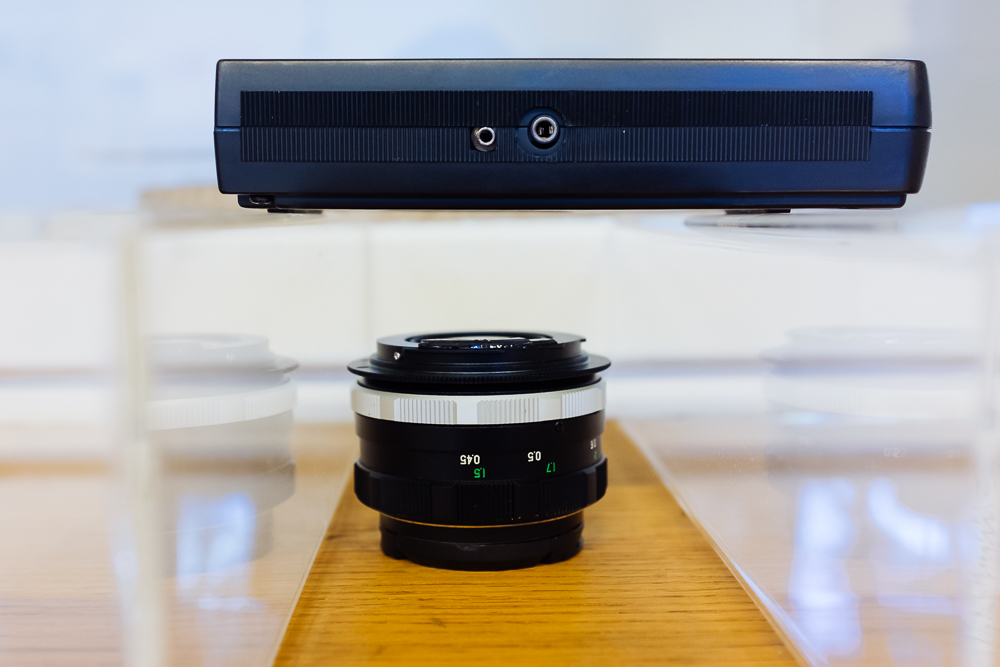 Of course, I used those acrylic boxes for their invaluable properties.
Of course, I used those acrylic boxes for their invaluable properties.Nah, they were simply standing around and fitted my needs for size. Additionally, because of their transparency I had more light to snap some pics and could better see what I was doing.
I also took some measurements with the lens standing inside the acrylic box to see how much of the radiation would be blocked by it:
Lastly, I also measured our schools own sample of uranium ore that usually leaves the students in awe and terror.
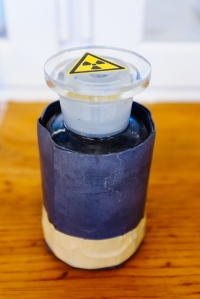
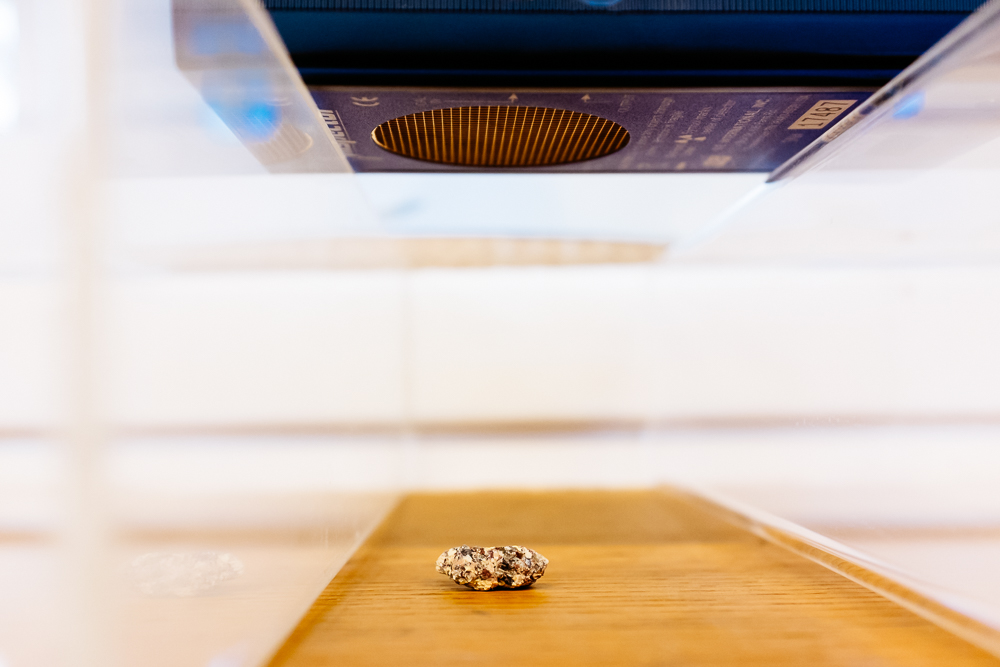 It’s the sample with the highest activity of the bunch, measuring in at almost 500 cpm at a distance of 8cm. If you hold the counter right on top of the little stone and activate the audio signal you get quite the terrifying concert.
It’s the sample with the highest activity of the bunch, measuring in at almost 500 cpm at a distance of 8cm. If you hold the counter right on top of the little stone and activate the audio signal you get quite the terrifying concert.Which of my lenses are radioactive and how bad is it?
There are three radioactive specimen in my list of contenders for the 50mm comparison that I’m doing these days
SUPER-MULTI-COATED TAKUMAR 50MM F/1.4
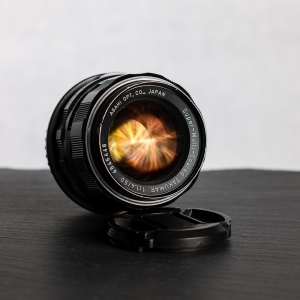 Many Super-Takumars and SMC-Takumars (usually the “super-multi-coated” versions) were constructed with a thoriated glass element.
Many Super-Takumars and SMC-Takumars (usually the “super-multi-coated” versions) were constructed with a thoriated glass element.
In the Super-Multi-Coated Takumar 50mm f/1.4 the thoriated element is believed to be second to last (second to the right). My measurements do, however, show that there have to be several elements of non radioactive glass in front of the thoriated element because the activity in front of the lens is much lower.
CARL ZEISS JENA PANCOLAR 50MM F/1.8 “ZEBRA”
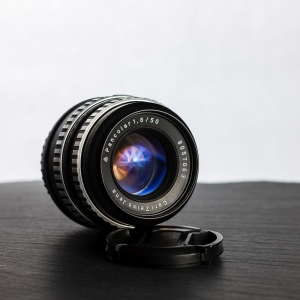 With lenses from Carl Zeiss Jena only the zebras and thereof only a view versions are radioactive so the best bet you got is to make sure you get one with the yellow color cast.
With lenses from Carl Zeiss Jena only the zebras and thereof only a view versions are radioactive so the best bet you got is to make sure you get one with the yellow color cast.
The Pancolar measures strongly radioactive on either side of the lens, therefore I would either guess that there are in fact two radioactive elements (2 and 5) in the lens or that the single thoriated element would be the third one (third from the left).
FUJINON 50MM F/1.4
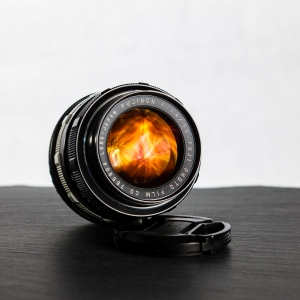 With the Fujinon lenses only the 50mm f/1.4, either EBC coated or the one without EBC coating, are known to be radioactive and of whom only the early versions.
With the Fujinon lenses only the 50mm f/1.4, either EBC coated or the one without EBC coating, are known to be radioactive and of whom only the early versions.
The Fuji is the most active of my collection and both front and back are almost identical so I cannot say for sure where the thoriated element sits. If it was #4 (behind the iris) the particles would have to travel a similar distance through glass on either side. However, with that massive amount of radioactivity (it’s alpha-particles after all) my guess would be that there’s in fact two thoriated elements and that these each sit behind the front and rear elements (#2 and 6 in the picture).
Now the numbers
As I said above, I first measured the lenses at a distance of 10cm exactly. I first measured the total number of counts for 30 seconds and converted that into cpm (counts per minute) by doubling the measured value.
I did these measurements for both the front and the rear of the lens and once with the lens cap installed and removed respectively.
I did these measurements for both the front and the rear of the lens and once with the lens cap installed and removed respectively.
I also mentioned before that you have to account for the background radiation and therefore I subtracted that from my measurements.
For the bare lens elements I also measured the dose (which depends on the nature of the radiation and the energy of the particles.) and calculated the dose equivalent so that people can actually make something of that value.
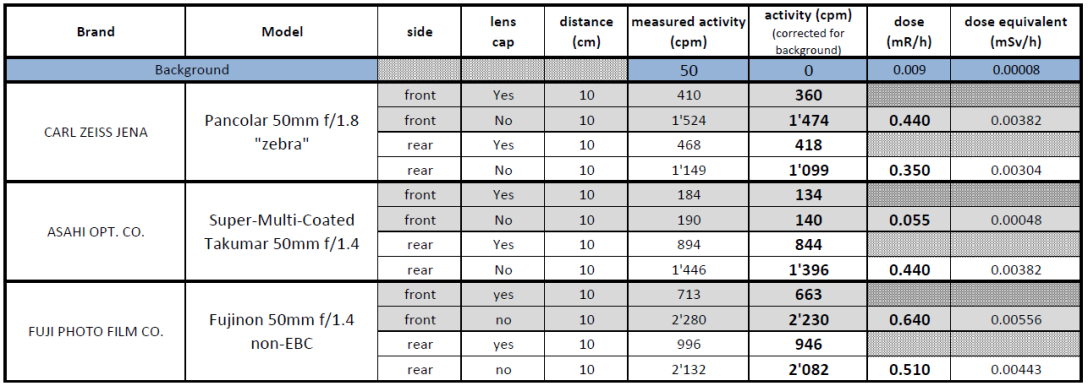 You can see that the Pancolar shows about 40% more activity on the front element and that the front lens cap seems to block more (about 70%) of the radiation than the rear cap (still 60%). This led me to believe that the radioactive glass elements sit rather gloss to the surface because otherwise the activity would be much lower.
You can see that the Pancolar shows about 40% more activity on the front element and that the front lens cap seems to block more (about 70%) of the radiation than the rear cap (still 60%). This led me to believe that the radioactive glass elements sit rather gloss to the surface because otherwise the activity would be much lower.
On the other hand, the Takumar shows almost no activity on the front element and the lens cap seems to make no difference at all. (I assume that you mainly measure beta-particles after so many glass elements.)
The rear element, however, shows a rather high level of activity but the lens cap absorbs 40% of the particles – which points to alpha-particles again.
The rear element, however, shows a rather high level of activity but the lens cap absorbs 40% of the particles – which points to alpha-particles again.
Last but certainly not least, the Fujinon shows extremely high activity on either side of the lens. It’s 5 times higher than the uranium sample I measured at 430 cpm (corrected for background) and 50% higher than the most active sides of the Takumar and the Pancolar both. The fact that the lens caps can shield off so much of the radiation (almost 70% on the front) proves that it’s mainly alpha-particles we measure.
For the fun of it, I also measured the lenses at a distance of only 3cm with the lens caps removed and only the sides that seemed of importance.
 Now I had to turn off the audio signal from the Geiger Counter because it was going crazy. (11k crackling sounds per minute is quite a lot.)
Now I had to turn off the audio signal from the Geiger Counter because it was going crazy. (11k crackling sounds per minute is quite a lot.)
When I did the exact same measurement with the lenses INSIDE the acrylic box, which measures about 5mm in thickness, the activity was reduced by about 70% for each of the lenses. Because of the rather high energy of the alpha-particles it’s to be expected that some will pass through acrylic aswell. (After all, they passed through the outer glass elements too!)
What about other lenses, you wonder?
I also brought the Color-Ultron along and had a go with it.
I measured both the front element and the rear element at a distance of only 3cm and without any lens caps. The activity was on the same level as the background readings.
I also brought the Color-Ultron along and had a go with it.
I measured both the front element and the rear element at a distance of only 3cm and without any lens caps. The activity was on the same level as the background readings.
INTERPRETATIONS?
The numbers for the measured activity look pretty dire compared to the background and the sounds from the Geiger Counter are terrifying for anyone who’s not accustomed to working with radioactive samples.
But when you look at the dose equivalent values, it’s not so bad anymore. Or is it?
But when you look at the dose equivalent values, it’s not so bad anymore. Or is it?
Well, the natural dose a citizen of switzerland absorbs during a yearaccumulates to somewhere around 4 – 5 mSv. The legal limit for working personnel in nuclear power plants or medical/research facilities tasked with radioactive work is 20 mSv/year (after which you get assigned a desk job, I’ve been told).
Now what about those lenses? Are they dangerous?
You see that the Fujinon at a distance of 3cm puts out a dose equivalent of almost 0.03 mSv/h. A single dose of about 100 mSv is said to cause nausea, headaches and vomiting.
The longer the period we’re exposed to radiation (assuming that after that period we absorbed a dose equivalent of x mSv) the less damage it will do because our cells are constantly repairing the damage caused by radiation. However, at a certain point the cell will rather commit suicide than to try to repair the damage that was caused. That’s when we talk about radiation sickness (which is caused by a dose equivalent of around 1’000 mSv absorbed in a very short time period).
The longer the period we’re exposed to radiation (assuming that after that period we absorbed a dose equivalent of x mSv) the less damage it will do because our cells are constantly repairing the damage caused by radiation. However, at a certain point the cell will rather commit suicide than to try to repair the damage that was caused. That’s when we talk about radiation sickness (which is caused by a dose equivalent of around 1’000 mSv absorbed in a very short time period).
Now if we look at the numbers, it should be clear that even holding the Fujinon in your hand for several hours won’t cause any radiation burns. To absorb a dose of 5 mSv you would have to hold it for an entire week (almost 170 hours).
If you were to keep the lens caps on and leave the lens about 10cm away from your body (like keeping it under your pillow?!) it would take a lot of time to absorb a significant amount of radiation.
If you were to keep the lens caps on and leave the lens about 10cm away from your body (like keeping it under your pillow?!) it would take a lot of time to absorb a significant amount of radiation.
For comparison, when you fly from New York to Germany you get a dose equivalent of 0,1 mSv. That’s 10 nights of sleeping with the Fujinon under your pillow. 
Advertisements










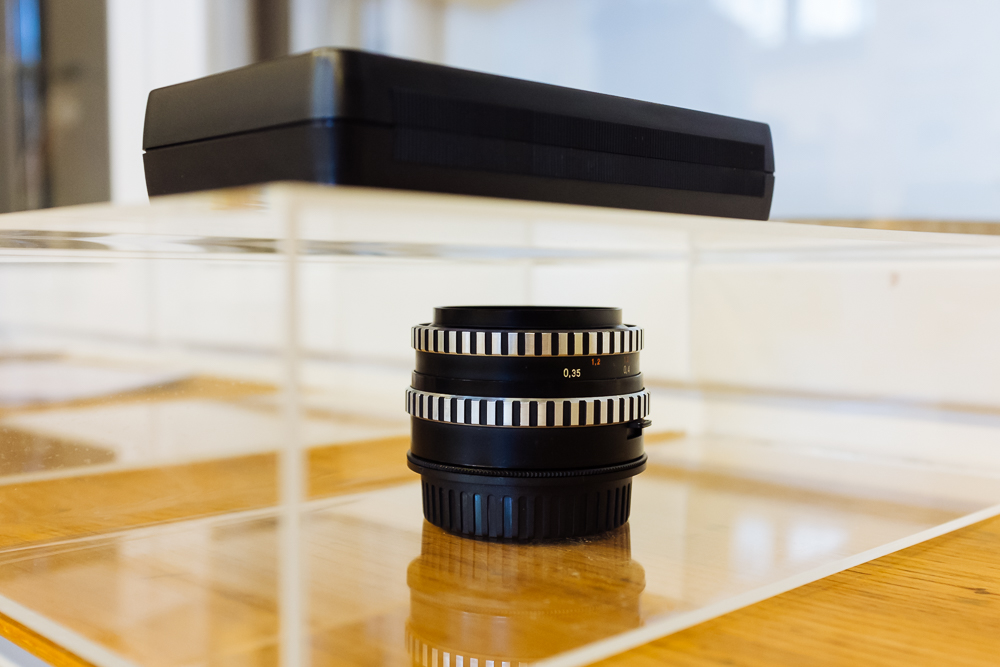
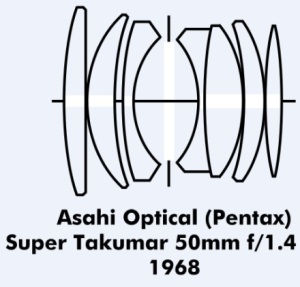
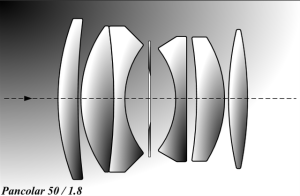
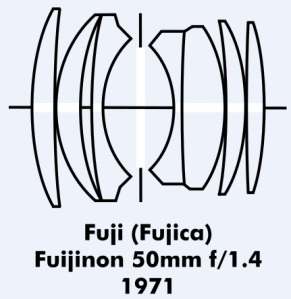
No comments:
Post a Comment